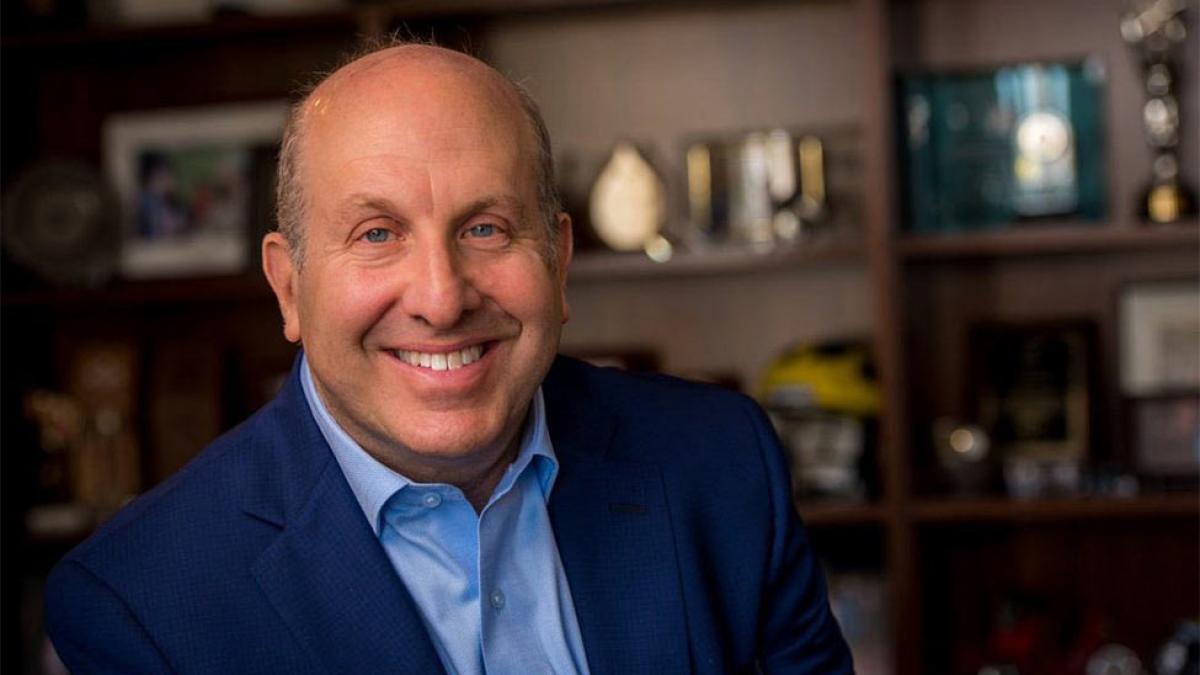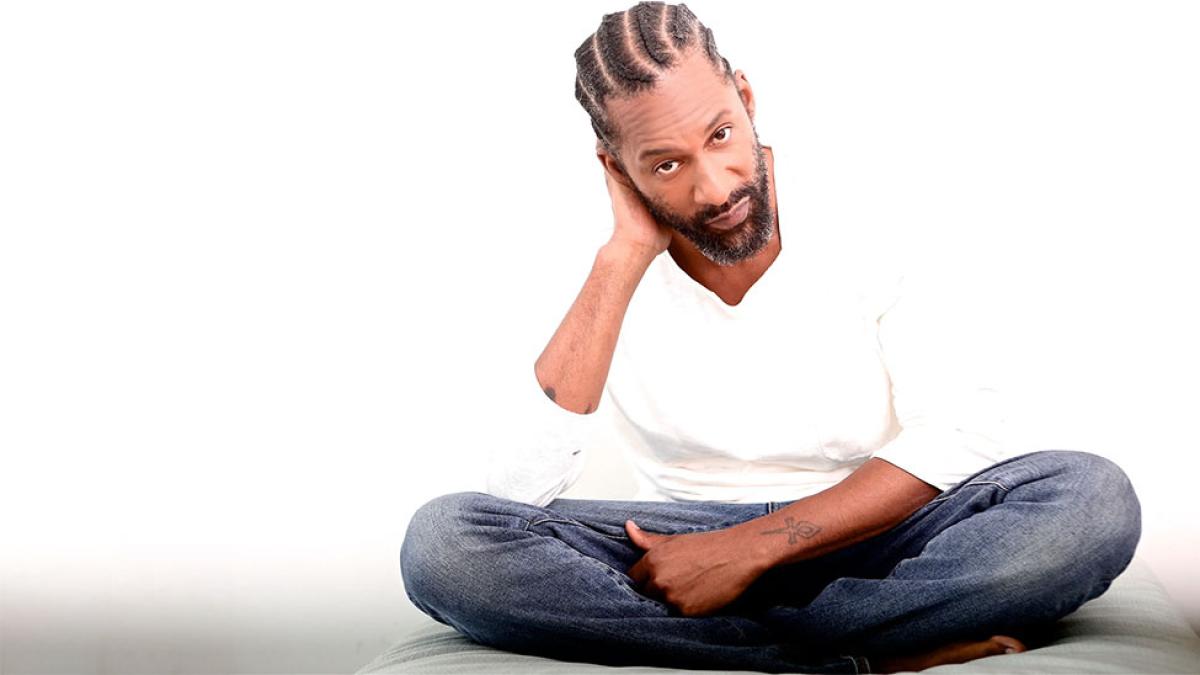The Animal Advocacy Clinic is one of the most unique courses Pace has to offer; enabling undergraduates the incredibly rare experience to lobby in Albany for bills aimed at animal protection.
The Bernard H. Mendik Lifetime Leadership in Real Estate Award
Crain's New York Business reports Pace University Trustee Barry M. Gosin to receive the Bernard H. Mendik Lifetime Leadership in Real Estate award.
After epic failure, Billy McFarland says he's planning another Fyre Festival. Why some can't wait.
"Love it or hate it, Americans and global audiences alike love to witness celebrity scandals, epic failures and potential resurgences in the media," says Melvin Williams, associate professor of communication and media studies at Pace University. "McFarland’s attempt to revive the Fyre Festival entices enduring public fascination with watching cringeworthy moments unfold for entertainment."
Is Clarence Thomas Clueless? Some Questions He Should Answer
Professor Bennett Gershman pens an op-ed in Law & Crime about questions Associate Supreme Court Justice Clarence Thomas should answer.
The 2023 Energy & Environment Power 100
85. Jason J. Czarnezki
Associate Dean and Executive Director, Environmental Law Programs, Elisabeth Haub School of Law at Pace University- In the 10 years that Jason Czarnezki has taught at Pace University’s environmental law program, the department has been among the top-rated programs in the country according to the U.S. News & World Report. Czarnezki helped the farmers market operator GrowNYC formalize its relationship with the school’s food and beverage law clinic in 2021. The following year, he became the faculty director for Pace’s sustainable business law hub, which is devoted to addressing sustainability challenges through research and public policy.
Men’s Speech Articulation Influences Perceptions of Their Status and Attractiveness, Study Finds
“I have been teaching speech science and phonetics for the last ten years, and my disciplinary focus has been speech-language-hearing sciences,” said study author Sethu Karthikeyan, an associate professor of communication sciences and disorders at Pace University.
Pace University Partners with The Community Fund to Identify Community Service Needs
- Read more about Pace University Partners with The Community Fund to Identify Community Service Needs
Mental health, counseling, substance abuse, and suicide prevention services are among growing needs in lower Westchester that were identified by a team of Pace University faculty researchers during a survey of community residents. The study, commissioned by The Community Fund of Bronxville, Eastchester, and Tuckahoe was conducted by the Helene T. and Grant M. Wilson Center for Social Entrepreneurship at Pace University over an 18 month period that included interviews with area not-for-profits, service providers, and stakeholders.
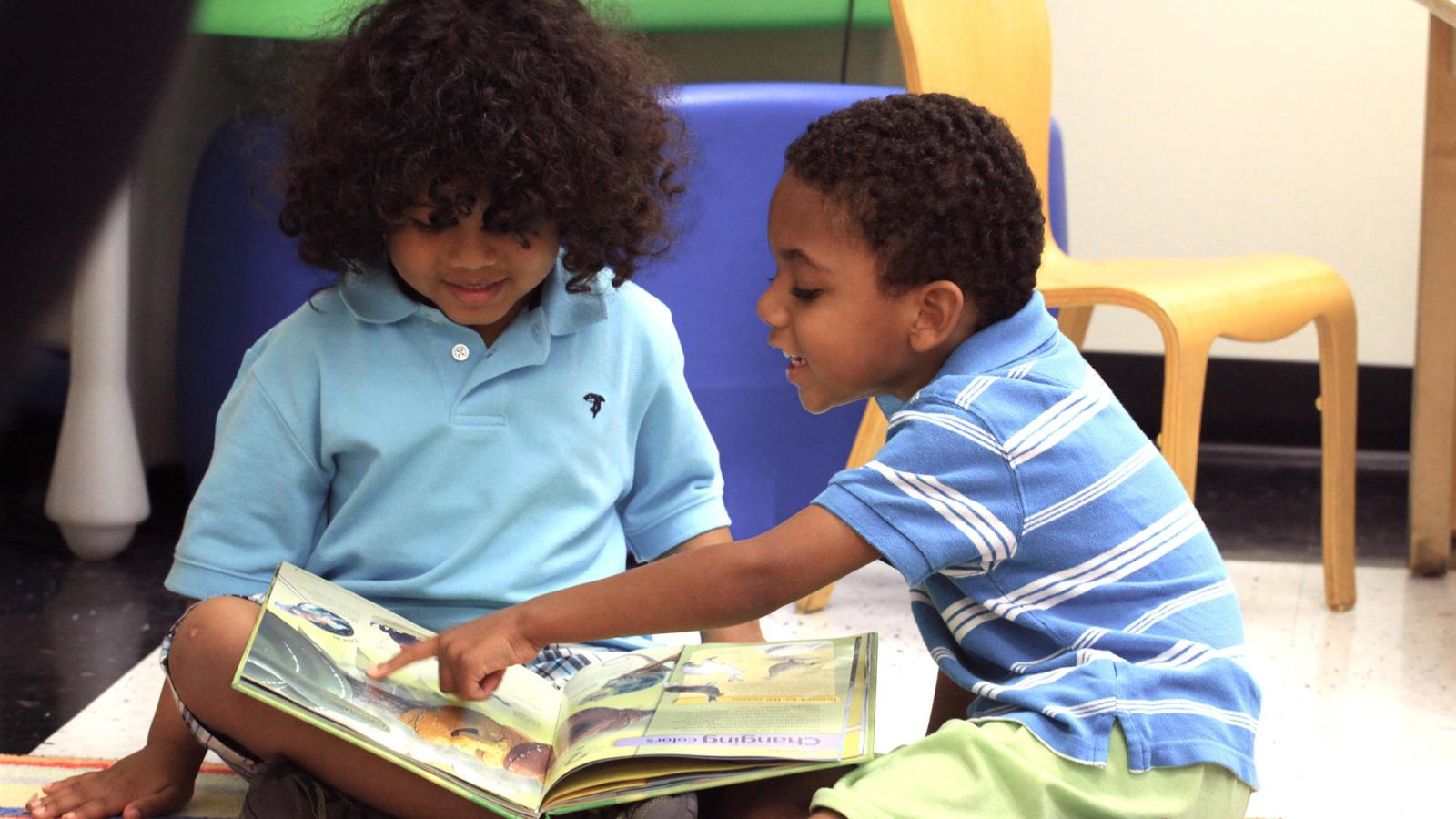
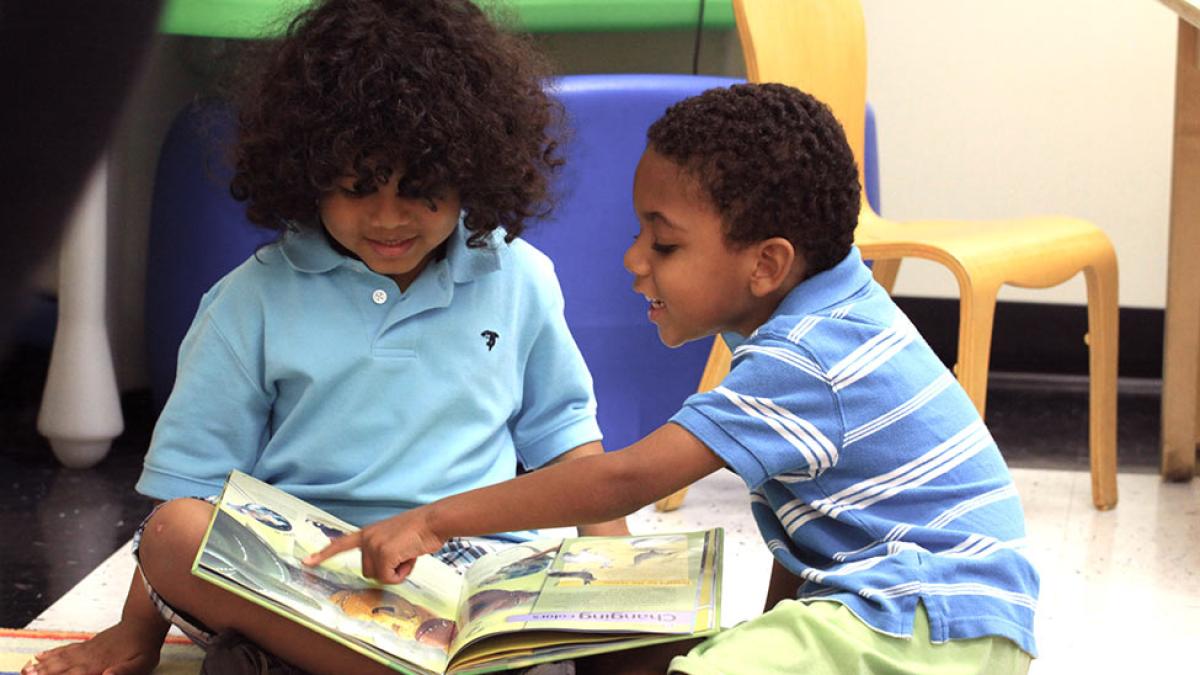
Researchers Identify Gaps in Services
Mental health, counseling, substance abuse, and suicide prevention services are among growing needs in lower Westchester that were identified by a team of Pace University faculty researchers during a survey of community residents.
The study, commissioned by The Community Fund of Bronxville, Eastchester, and Tuckahoe was conducted by the Helene T. and Grant M. Wilson Center for Social Entrepreneurship at Pace University over an 18 month period that included interviews with area not-for-profits, service providers, and stakeholders.
“Taking a thorough look at community resources and comparing them to current needs goes a long way to ensuring that no person or group is overlooked, and that The Community Fund is maximizing its reach, impact and resources,” said Rebecca Tekula, executive director of the Wilson Center for Social Entrepreneurship, and professor of public administration at Pace. “We are looking forward to continuing to work with The Community Fund to improve the lives of area residents.”
The assessment identifies gaps or inadequacies in areas such as human services, health care, housing, public safety, day care, and recreation, among other vital community needs. Findings were presented on March 29, 2023 at The Bronxville Public Library by Pace University faculty who identified ways to use the results to inform the important work of The Community Fund as well as nonprofit agencies, community programs, and local school administrations.
Overall, survey results (PDF) show that while the three communities differ in priorities based on service categories, mental and physical health emerged as the biggest service gap area overall. Findings emerging from the interviews largely confirm the survey results. The most identified theme among all the interview participants refers to mental and emotional health, followed by diversity, equity and inclusion, and youth social and emotional programs.
“The Community Fund is committed to supporting critical social, health and well-being programs that dramatically improve the lives of the people in our Bronxville, Eastchester and Tuckahoe Community,” said Amy Rutter Korb, executive director, The Community Fund. “We are proud to have employed the expertise of Pace researchers to inform our work as well as the efforts of our community partners.”
In 2021, The Community Fund selected experts at the Helene T. and Grant M. Wilson Center for Social Entrepreneurship at Pace University to conduct a survey of community members and analyze results.
During this 18-month partnership between The Community Fund and Pace University, Pace Public Administration and Wilson Center faculty and researchers developed an in-depth community survey and held interviews with select community members and leaders in the areas of public health, human services, business, nonprofits, and government. All responses were treated as confidential to ensure the greatest possible degree of candor.
“The interviews and analysis help us understand the ongoing needs of residents, and project where program development and funding will have the greatest impact,” said Gina Scutelnicu Todoran, department chair of public administration at Pace. “It is particularly rewarding to work with an organization like The Community Fund to translate research into practice as we share assessment results with community leaders."
Wilson Center and Public Administration faculty and graduate students have completed a variety of in-depth research projects and reports for local governments and community organizations across a variety of areas, including an assessment of K-12 learning programs for the Westchester Children’s Association; the economic impact of the nonprofit sector in Westchester County; a community assessment of performance for the Port Chester Police Department; and Pace University’s overall economic impact in New York State.
About The Community Fund
The Community Fund, which was founded in 1919, currently supports 26 social service agencies and community programs that provide critical services to Bronxville, Eastchester, Tuckahoe, and the area within the Bronxville 10708 zip code – often at no cost to people who cannot afford to pay. Additionally, The Community Fund provides administrative support to the agencies it supports through on-going site visits, consultations, workshops, and forums.
About The Helene T. and Grant M. Wilson Center for Social Entrepreneurship
The Wilson Center promotes social change through entrepreneurship. The Center furthers this mission by serving Pace students across all disciplines, social enterprises and nonprofit organizations with education, research, communication, and advisory service.
About Pace University
Since 1906, Pace University has been transforming the lives of its diverse students—academically, professionally, and socioeconomically. With campuses in New York City and Westchester County, New York, Pace offers bachelor, master, and doctoral degree programs to 13,600 students in its College of Health Professions, Dyson College of Arts and Sciences, Elisabeth Haub School of Law, Lubin School of Business, School of Education, and Seidenberg School of Computer Science and Information Systems.
Q+A with Publishing Student Katie Schwab
After studying acting during her undergrad years, Katie Schwab ’23 switched tracks during the height of the pandemic, allowing her to pursue a future in an industry she hadn’t thought much about previously: publishing.
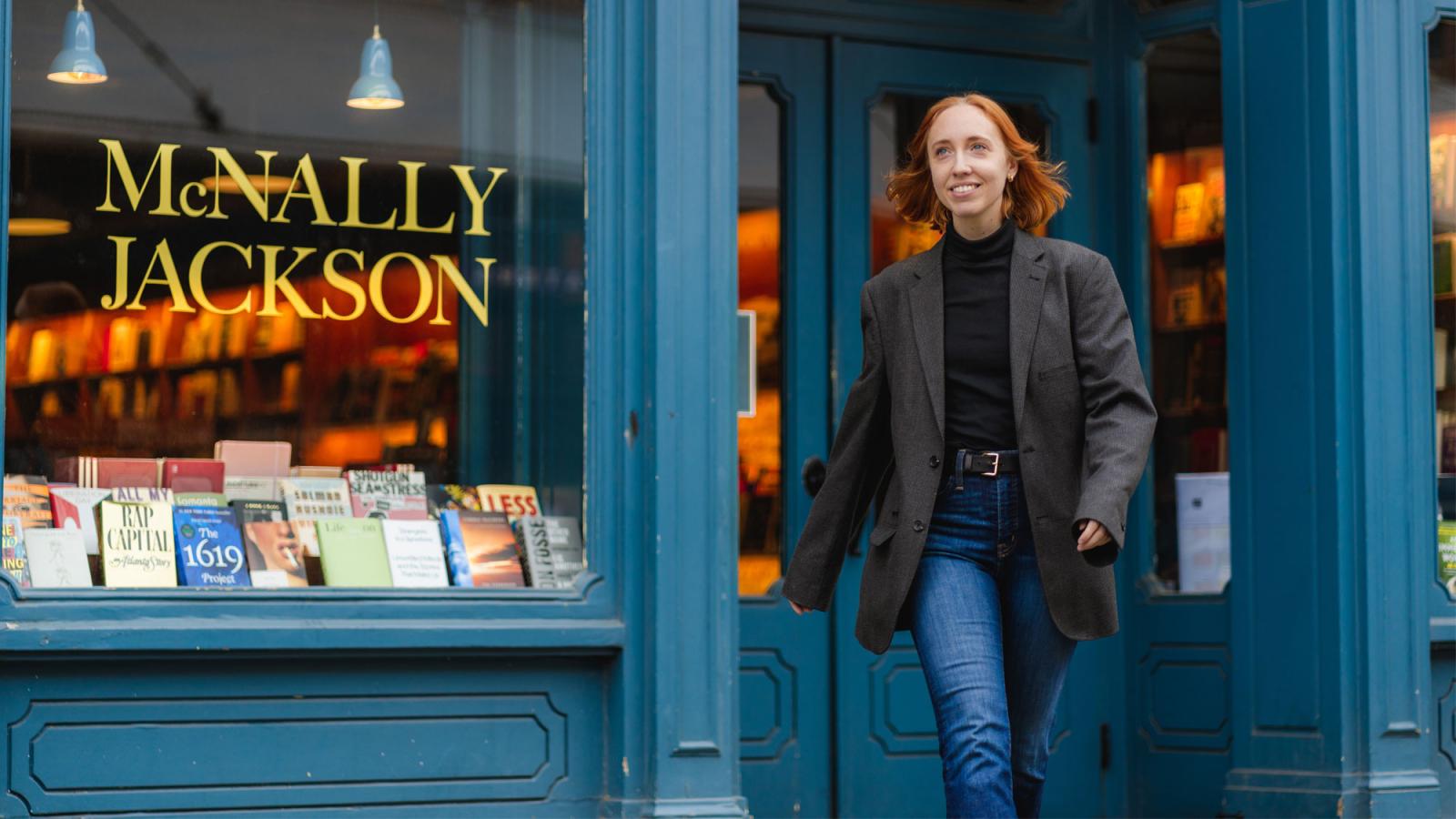
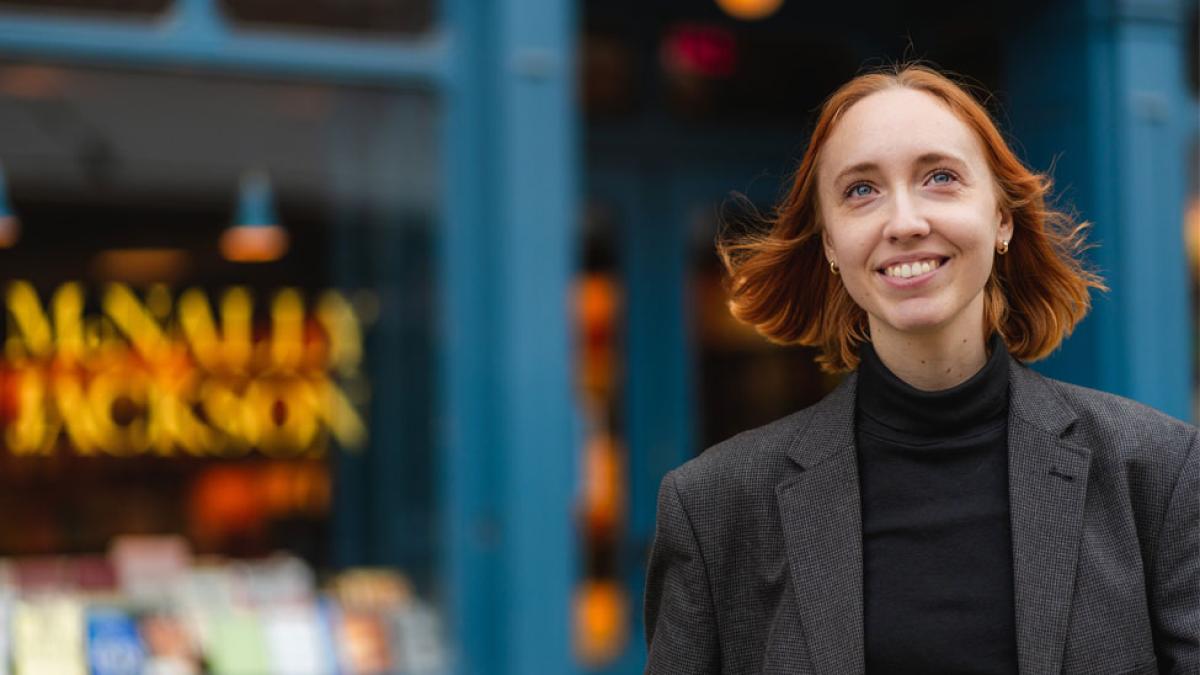
After studying acting during her undergrad years, Katie Schwab ’23 switched tracks during the height of the pandemic, allowing her to pursue a future in an industry she hadn’t thought much about previously: publishing. Read what she has to say about Pace’s MS in Publishing program.
The nature of publishing has changed so much in the last decade. What excites you about the future of publishing?
I am so excited about the future of publishing! Especially regarding the continuing dedication toward diversity and inclusion, not only through the types of stories being published, but by also providing more opportunities for authors from marginalized communities to tell those stories. I am currently writing my graduate thesis on the histories of queer adult and YA fiction, and the different treatments of these markets from a publishing perspective given our context of time. It has been amazing to track the linear progression of acceptance of queer writers and narratives, especially within this last decade. It’s a truly wonderful feeling to walk into a bookstore and see designated tables featuring queer literature. I am really excited to see how much more space we are given in publishing in the future.
What drew you to Pace’s MS in Publishing program? Does it tie in at all to your undergraduate studies or professional experience?
During the first lock-down of 2020, I was in a pivotal place in my life career-wise; I’d studied acting during undergrad. I fell in love with reading again and realized there is this whole industry out here that I’d never thought about before. I did some research on graduate programs, and it became very clear to me that the MS in Publishing program at Pace was the right one for me. Not only did it bring me to New York City, the center of the publishing world, but it is clear how much Professor Soares and the rest of the faculty care about providing students with every opportunity to learn, network, and, ultimately, get hired in publishing.
What was your favorite class within the program and why?
I enjoyed so many of my classes! I’d have to say my favorite class was Copyediting/Proofreading with Professor Holt. It takes a certain group of people to get genuinely excited to learn about commas for three hours! I also liked Professor Samedi’s Introduction to Production and Design class. I’m no designer, but I loved being able to learn about the elements that go into designing a book cover, and the materials that bring them to life.
What is something you've learned while in the program that you didn't expect to learn?
I have never been great at math or numbers, but Financial Aspects of Publishing was probably one of the most important and beneficial classes I took during the program. Publishers have a unique way of creating budgets and allocating royalties for books and authors. I might not end up in finance but knowing these systems and how to read P&Ls are very important skills that I’ve been able to put on my resume.
Mentoring, internships, and exposure to the New York publishing scene are part in parcel with the program. Can you describe your personal experience with some of those program aspects?
Yes! It was actually the One-to-One Mentorship program that sealed the deal with me for Pace. I’ve had the opportunity to learn directly from real working professionals in publishing—you can’t get that kind of industry education from anywhere else. My mentors have all been editors from Big Five imprints—LBYR, Crown, Viking—who have given me invaluable advice for starting a career in editing. I was even invited inside the offices of Penguin Random House!
What is one piece of advice that you have for future MS in Publishing students?
Be involved! Each semester there are several events offered, including Speed Mentoring, guest lectures, and even donut parties before class. Take advantage of every opportunity presented to you and keep in touch where you can—especially with your classmates, because you never know which connection might be the one to get you a job.
In what ways has the program inspired you to reach higher in regard to your future career goals?
I went into the program knowing very little about the publishing industry, or where I fit into it, but I loved stories and wanted to work within the world of books. Now, I have my sights set on becoming an acquisitions editor someday, making a career out of discovering and creating dream books for readers and dream publications for authors. I would do Pace’s publishing program again in a heartbeat.
More from Pace
Professor of History Nancy Reagin, PhD, and Associate Professor of Communication and Media Studies Seong Jae Min, PhD, have earned the prestigious title of Fulbright Scholar to research and teach during the 2023–2024 academic year. Associate Professor of Economics Anna Shostya, PhD, will serve as a Fulbright Specialist for a three-week program in Spring 2023.
Ka’ramuu Kush, a faculty member of the Sands College of Performing Arts, is sharing wisdom and experience gained from many years as a working actor, director, and writer with students—and has already made quite an impact.
Chris Rizzo '01: Precision Focus on Environmental Law
Chris Rizzo is a Partner with Carter Ledyard and Milburn LLP and Director of the Environmental Practice at the firm. From the moment he decided he wanted to attend law school, Chris knew that he was specifically going to focus on environmental law. From participating in the environmental litigation clinic, to environmental law review, and ultimately graduating with an environmental law certificate, Pace provided the environmental legal education he sought out.
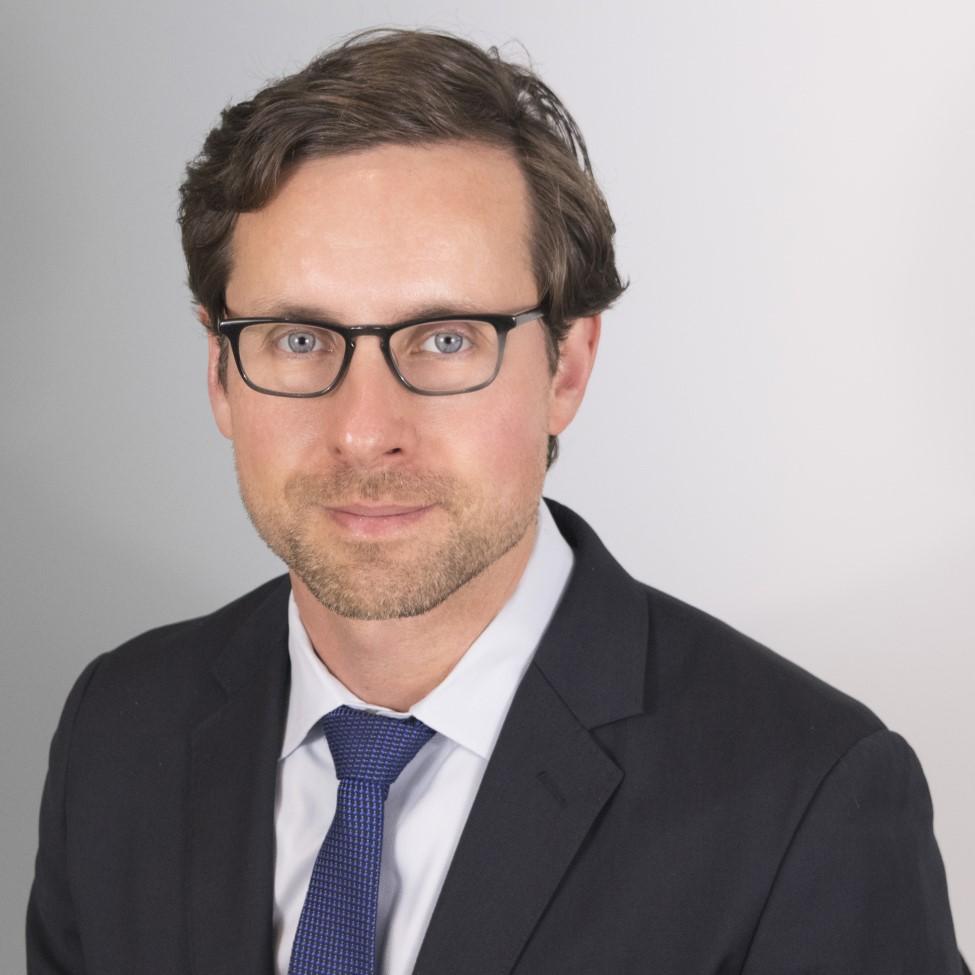
Chris Rizzo is a Partner with Carter Ledyard and Milburn LLP and Director of the Environmental Practice at the firm. From the moment he decided he wanted to attend law school, Chris knew that he was specifically going to focus on environmental law. From participating in the environmental litigation clinic, to environmental law review, and ultimately graduating with an environmental law certificate, Pace provided the environmental legal education he sought out.
When did you decide that you wanted to be a lawyer?
That was probably in my sophomore year of college. I was studying political science and biology. I had a biology professor, and I expressed to him my deep interest in biology, particularly environmental biology. And he said to me something like “no, no, no, no, Chris, do not become a scientist or biologist. You should become a lawyer, an environmental lawyer. Lawyers get everything done.” He didn't say this with kindness. He said it with resentment. But he was very clear with me that he thought I should go towards law school. I took it to heart, and I never looked back.
And from there, how did you choose Haub Law?
Well, I knew that I specifically was going to law school to focus on environmental law. So I sought out a law school where I could specifically focus on that area with the intention of practicing in that area.
I received a full academic scholarship to come to Haub Law, which was a huge motivation for me. I was very leery about taking on any student debt, and worried about what that would do to my professional flexibility in the future. I was admitted to a number of other law schools and while the full scholarship was a motivating factor, it was not the only one. At the time, a few other schools I looked at did not have the robust environmental law program that I was seeking and I thought they were not of any use to me. I wanted to be an environmental lawyer. Why would I go to a law school with two course offerings and an underdeveloped environmental law program? Haub Law had the environmental law program that I was looking for and combined with the scholarship it was an easy choice.
What were some of the more impactful experiences you had while at Haub Law?
The environmental litigation clinic is a very transformative program. Part of that was the oversight of Karl Coplan. When I had him, Professor Coplan was a very demanding and very good professor. The environmental litigation clinic really, really helped refine my legal skills. I also made a number of connections outside of Pace as well working on those matters, and I still find them valuable today.
You were an articles editor on the Pace Environmental Law review, and you graduated with the environmental law certificate. Would you recommend those experiences?
Yes. I had to write a note for the law review and that was a very useful process. It wasn’t so much what I wrote, but the process of writing such a complex law journal is incredibly helpful. I think anybody that participates in a law review winds up being a better lawyer because you're forced to learn how to write, research and edit.
I also think the certificate program is useful. I think exposing law students to topics, concepts, and legal acronyms is helpful and gives you a running start in your career as an environmental lawyer. I think it's really invaluable and that's one of the reasons I came to Haub Law. All of the robust environmental course offerings really gave me a foundation in various areas of law, which was helpful later.
You are a partner with Carter Ledyard and Milburn LLP and director of the Environmental Practice—how did your career start out and how has it evolved?
My career definitely morphed over time. When I first started practicing law, I did a lot more traditional environmental work than I'm doing these days. I worked with RCRA and CERCLA, which are two federal hazardous waste laws. I worked heavily with NEPA and SEQRA. I worked on a lot of historic preservation matters involving federal, state, and city preservation laws. I also worked on some brownfield matters, the Clean Water Act, and more. The past few years I've started doing a lot more real estate related work. That’s because my practice is very focused on New York City and this is a real estate town. Helping clients resolve their land use, construction, and real estate problems has become a big driver of my work.
What advice do you have for law students who want to work in the field of environmental law at a law firm upon graduating?
I find that Haub Law students are pretty good about aggressively seeking out internships and experiences and opportunities in the areas that are meaningful to them. Whenever I see a Haub Law resume I'm always impressed, there are internships at the US Environmental Protection Agency, the Environmental Litigation Clinic, and all sorts of things. It is important to fill your resume with meaningful experiences in the area you want to practice in, but also networking in those areas. And this is true, not just for environmental law, it's true for any subject matter you want to practice. It is really about networking, meeting as many people as you possibly can who might become future employers. To that end, you should become a student member of the New York State Bar Association or the New York City Bar Association. You can sit on committees as students, and I would do that aggressively and participate. You must prioritize making connections outside the law school even more than making connections inside the law school.
That is very good advice. Outside of the law, tell us a bit about yourself and your hobbies.
Well, I have 3 young kids, so that takes up a lot of time. So aside from my family, I also love exploring New York City and New York State. My family and I love national, state and city parks—we travel all over the place to visit them. I am also a big fitness enthusiast—I run 5ks and bike to work and do whatever I can to stay fit. I think prioritizing your personal life, physical fitness and mental health is very important. There is no question that I am a better lawyer because I dedicate time to these things. You need to have a healthy balance and if you don’t have that balance you wind up being less of a professional.
Meet the Future of Communication Platforms
Read our interview with Lubin and Seidenberg alumnus Eric Klein '90, '97, co-founder and COO of Cloudonix.

Cloudonix - Pace Entrepreneurship Studio Startup
Eric Klein '90, '97, co-founder and COO
Nir Simionovich, CEO and founder
Interview with Lubin and Seidenberg alumnus Eric Klein
Tell us about your startup.
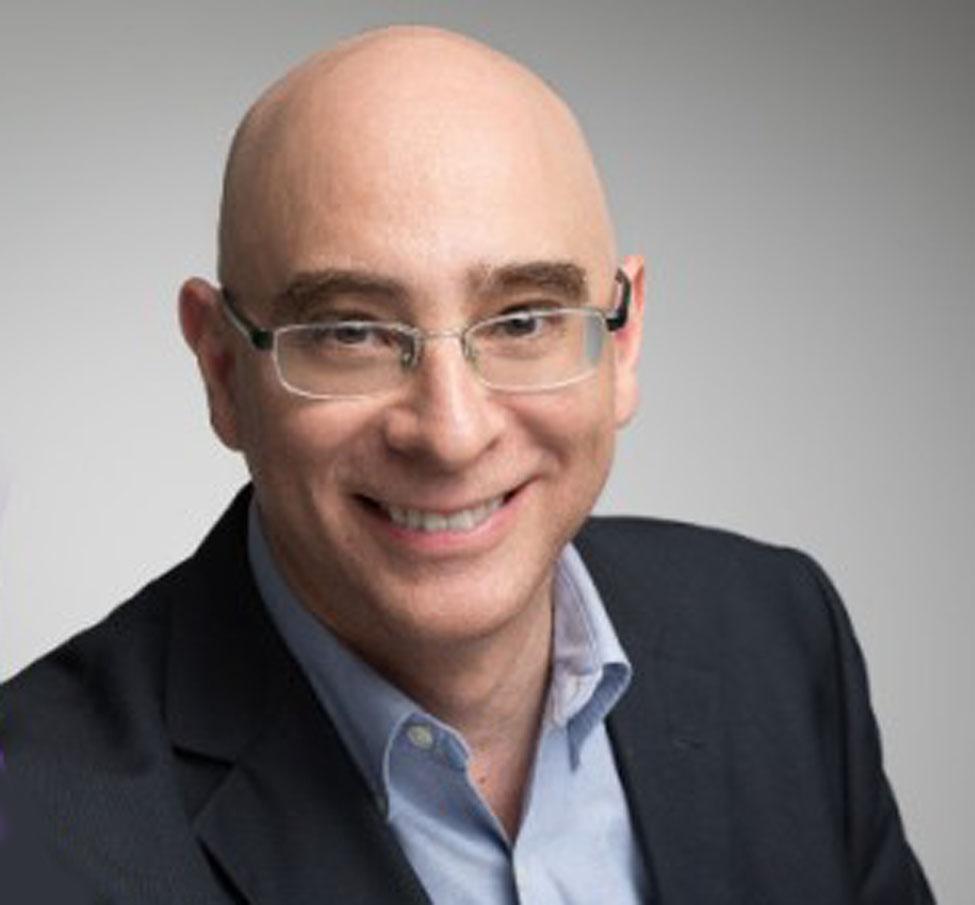
Cloudonix revolutionizes business communication with its Software Defined Voice and Text platform. Enterprises can streamline their operations and enhance customer service by integrating voice and data for a comprehensive service experience. With Cloudonix, companies can route voice and text communications from any digital source (websites, mobile apps, ads, emails, bus stops, or devices) directly to their call center, making it easier to capture leads and provide top-notch customer support. Cloudonix also enables remote teams to access cloud capabilities for their on-premise call center with added security, privacy, and cost-effectiveness.
How did you come up with the idea for your company?
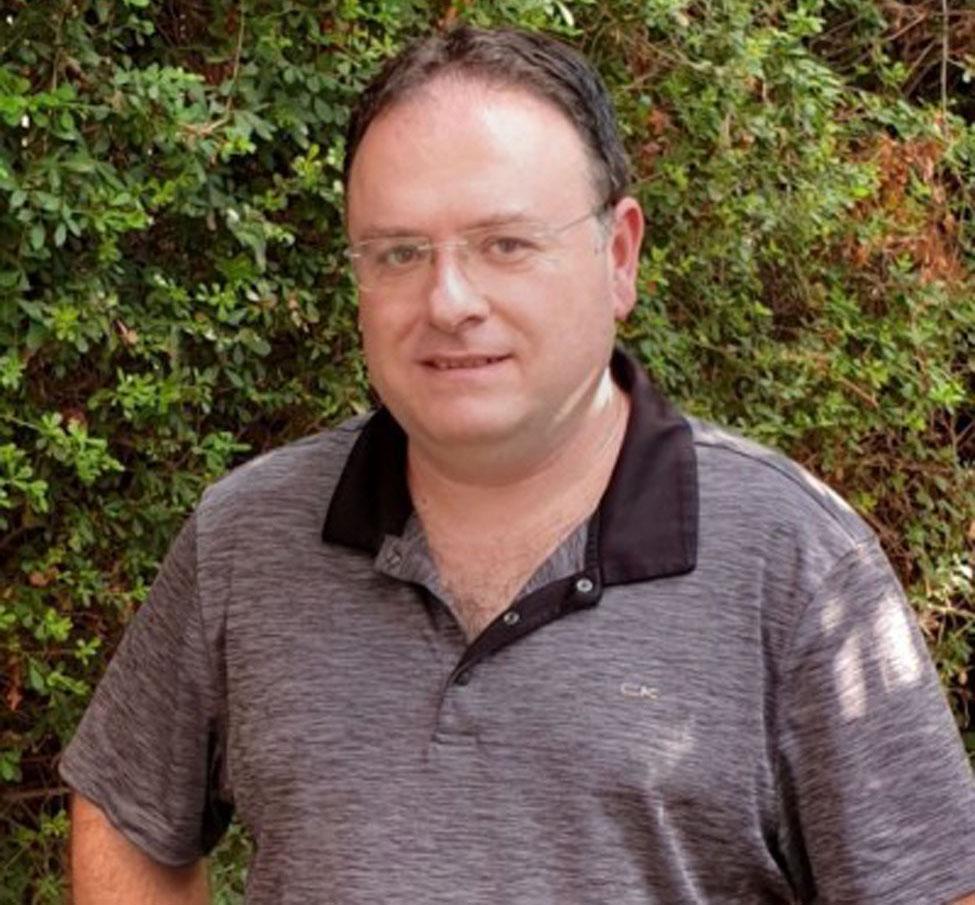
Cloudonix's beginnings were not as traditional as you might imagine—considering its industry. Prior to Cloudonix, Nir and I were working together in Greenfield Technologies, a telecom-focused consulting and development company that Nir founded in 2007. Starting in 2013, multiple companies came to us that were looking for a high-performance VoIP developer SDK that was optimized for mobile devices. At the time, the offerings were just too bloated and didn't fit the mobile device properly. We set out to build that SDK, and did so. Originally, we didn't plan to build a SaaS platform; however, following an incident involving Nir's wife and his old SUV, the idea behind Cloudonix was born in August 2015.
The incident occurred on a Saturday night, where Nir's wife took his car and drove to a mall with two of her friends. Roughly at midnight, she called Nir, who had stayed at home with their girls, saying: "The car stopped in the middle of the road and there is a smell of gas in the car.” Nir tried to get her to call the insurance company and get a tow truck, but she was unable to do so, mostly due to the duress she was under at the time. So, at around midnight, Nir got a babysitter and drove the family's second car to get his wife. On the way, he tried calling their insurance company—a far from ideal experience. Key in your ID, key in your policy number, select your issue ... the list just goes on and on. He tried using the company's mobile app, and there were forms, upon forms, upon forms to complete. Why does it have to be so complex? So, Nir had an epiphany—why is it so stressful to call the insurance company for assistance? He realized that much of it was related to the method they use to gather data—it feels like an inquisition. When you use the app it goes to the dialer and knows nothing about you (at best it knows to tie your phone number to your account). This means you need to answer lots of questions for the agent to have the context to help you.
But why? The mobile app has already been authenticated; it has the policy number and it can get your location. Heck, it can even be paired with the car's computer to get the status of the car. The app has the context; we can help preserve it and make the experience less painful. The next day, we started working on building the platform that is now known as Cloudonix.
As an alumni entrepreneur, how did your classes at Pace University prepare you to start your business?
As a double alumnus from Pace, I am constantly surprised. I earned my first degree from Lubin—a BBA in Management Information Systems. This not only gave me a strong basis in programming (not that I do that anymore), but I keep using what I learned in my marketing and accounting classes. For example, accounting helps with the budget planning and forecasting. Almost everything you do in a startup is in some way related to marketing and sales, even if you never talk to a prospect. So having these as a basis really helped shape my career and daily life in our startup.
Being on campus, or in an accelerator, comes with a level of energy and people to consult that is missing when you are in your own office. Finding people to help you and to work with you becomes much harder once you pass outside of a university setting.
What is a challenge you've had to overcome as an alumni entrepreneur?
Being on campus, or in an accelerator, comes with a level of energy and people to consult that is missing when you are in your own office. Finding people to help you and to work with you becomes much harder once you pass outside of a university setting.
Do you have any words of advice for a student looking to kickstart their own business?
Keep talking with advisors and potential customers; learn what the pain points are and what customers would pay to solve them. Too many startups are a solution looking for a problem, and that tends to mean that you have no path to revenue, let alone success. Find out if pain potential customers are already regularly spending money on due to their use of difficult or multiple tools. Once you find a way to streamline or consolidate their pain, you will have a winner. Otherwise, at best, you are a nice feature to be acquired by another company.
Connect with Cloudonix:
Twitter:
Linkedin:
Why Closer Academy-Industry Partnerships Will Be Key To College And Career Success—And Are Already Paying Off
Late last month, about 150 different employers sent recruiters and staffed tables at the biggest job fair in Pace University’s history.
There were a lot of reasons for the enormous turnout. Part of it is simple supply and demand. Even as our economy begins to slow, there are far more job openings than available workers, and employers are desperate to hire. Part of it is an eagerness to once again connect in person. This was the first major job fair in more than three years at Pace, since before the onset of the pandemic. And part of it is because of the educational model we embrace here. We combine world-class academics with hands-on, experiential learning that’s focused on producing graduates ready to hit the ground running in their careers—which makes our graduates very attractive to employers.
